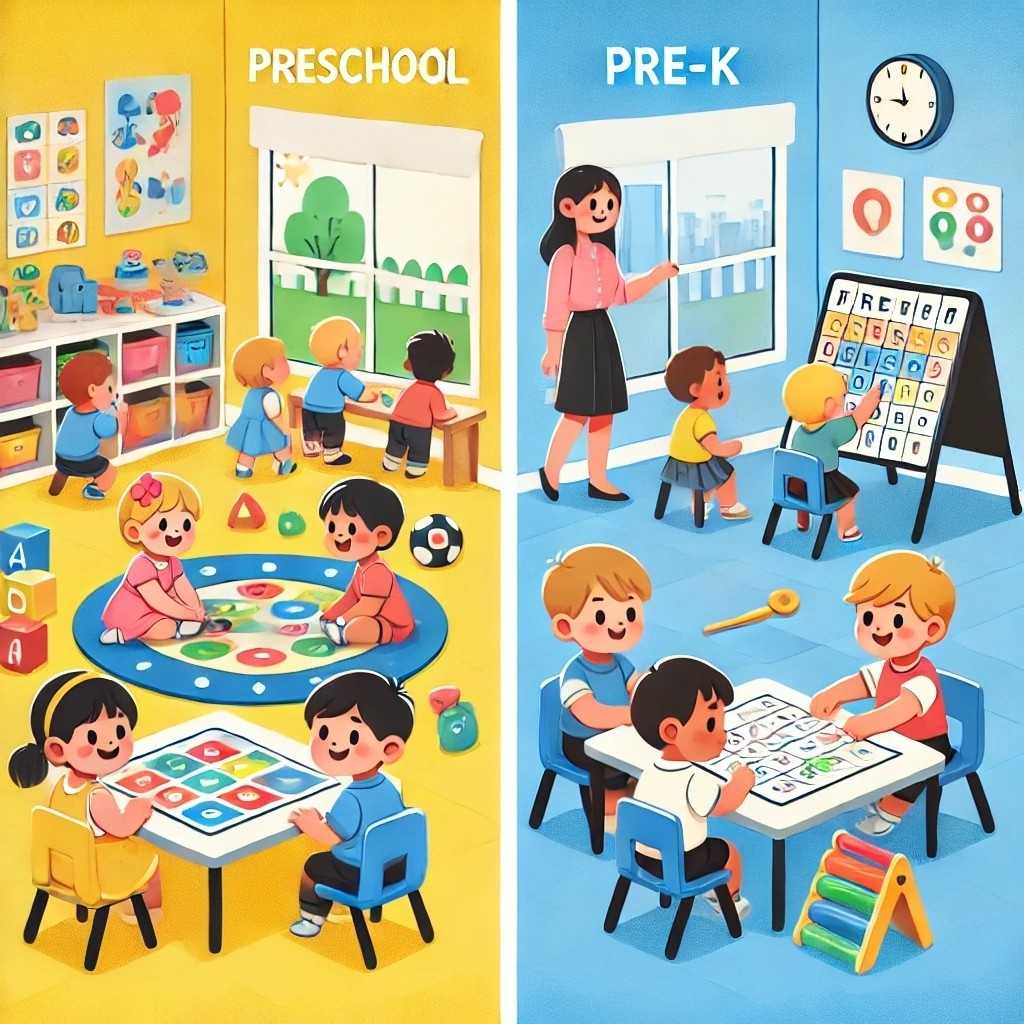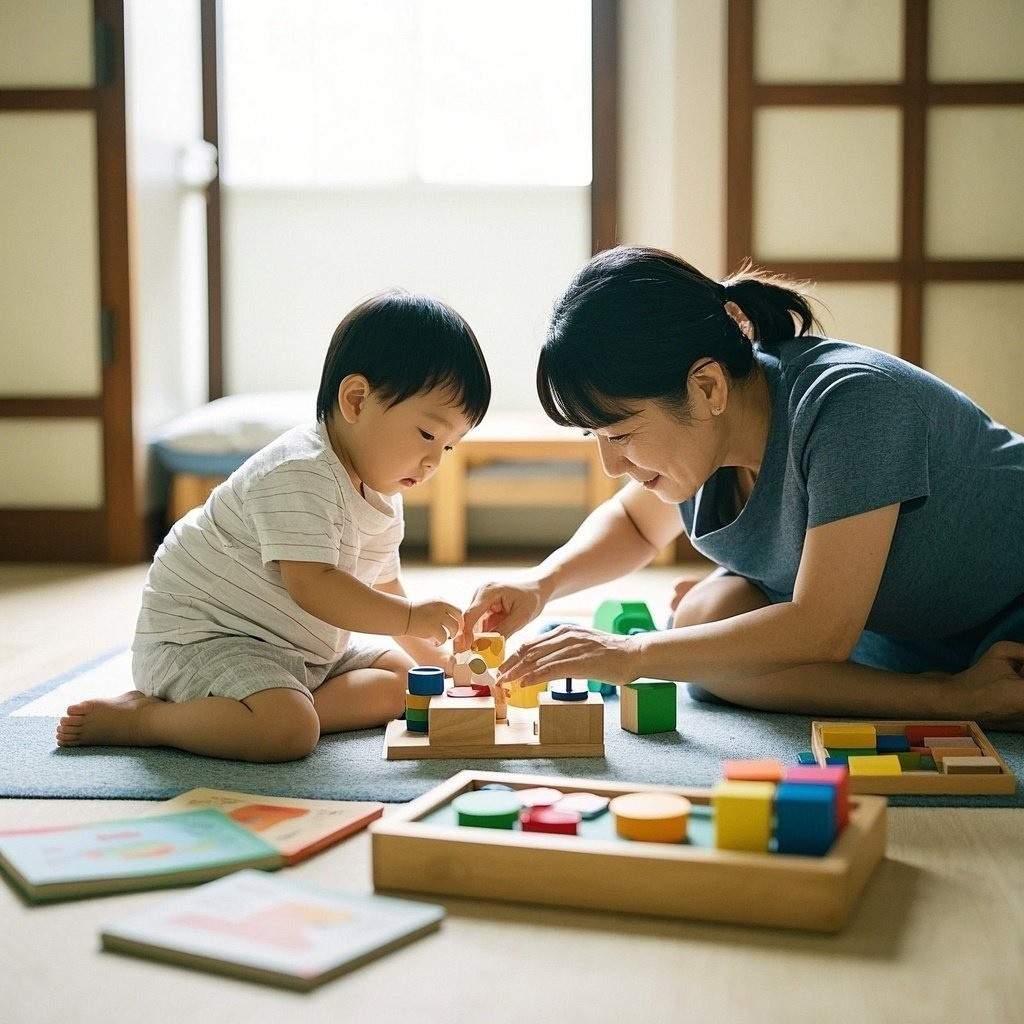In a world full of noise, movement, and distractions, it’s no surprise that many children struggle with staying focused and managing their emotions. For some, this can be a sign of sensory dysregulation—when the brain has trouble processing sensory information. Thankfully, sensory regulation can be improved through playful and engaging activities designed to help kids find calm and stay focused.
This article explores the importance of sensory regulation in children and provides fun sensory activities to support focus and emotional well-being.
What Is Sensory Regulation?
Sensory regulation refers to the ability to manage and respond appropriately to sensory input—what we see, hear, touch, taste, and smell. Children with well-developed sensory regulation skills can stay calm, pay attention, and shift their behavior based on their environment. But for others, sensory information can feel overwhelming or underwhelming, resulting in meltdowns, restlessness, or avoidance behaviors.
Common signs of sensory dysregulation in kids include:
- Frequent fidgeting or movement-seeking
- Sensitivity to loud noises or bright lights
- Difficulty concentrating or sitting still
- Emotional outbursts or trouble calming down
These behaviors often stem from a child’s nervous system either overreacting or underreacting to stimuli. That’s where sensory regulation strategies come into play.
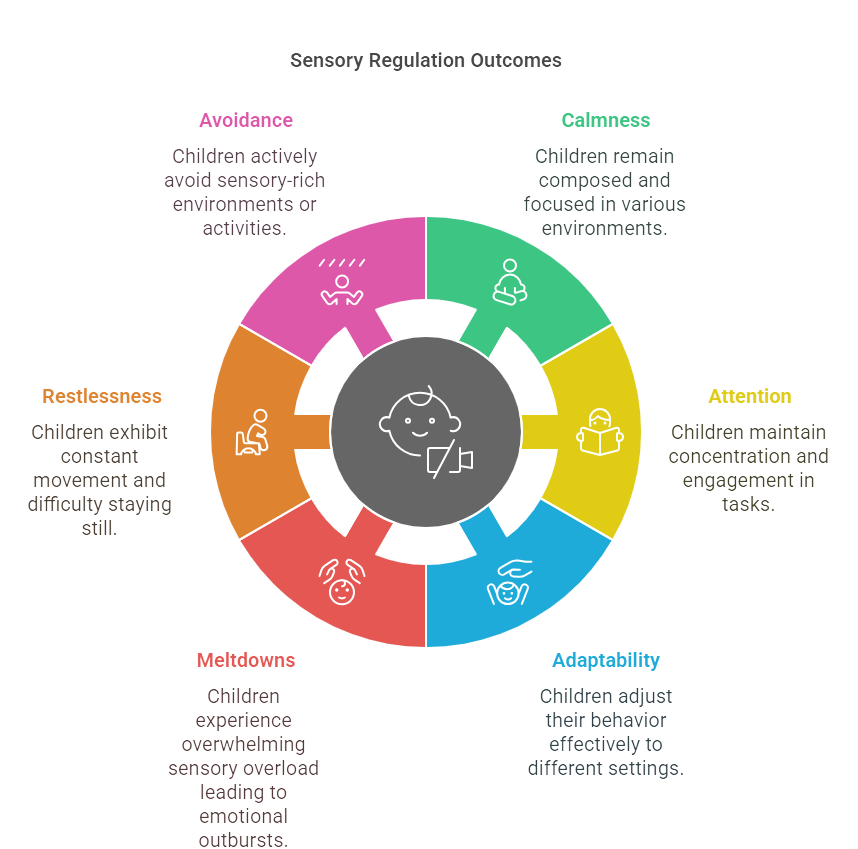
Why Sensory Activities Matter
Sensory activities for kids are designed to provide specific types of input—tactile, proprioceptive, vestibular, and more—that help regulate their sensory systems. These activities aren’t just fun; they’re vital for developing self-regulation, emotional balance, and better concentration.
Engaging in sensory play:
- Helps the brain organize incoming information
- Builds pathways that support attention and motor planning
- Enhances body awareness and emotional control
- Creates opportunities for mindfulness and calm
Whether your child is hyperactive or easily overwhelmed, targeted sensory play can help them find their balance and improve their ability to focus in school and at home.
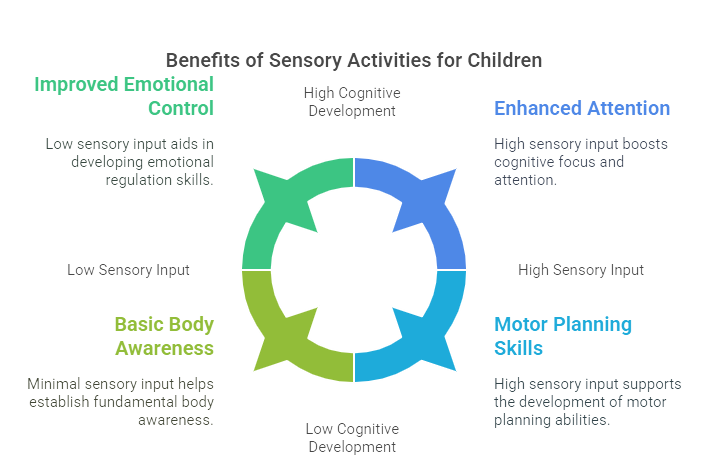
Fun Sensory Activities to Improve Focus
Sensory regulation doesn’t have to feel like therapy. With the right tools and creativity, you can turn everyday play into powerful regulation practice. Here are some fun and effective sensory activities that boost focus and engagement:
1. Tactile Activities
Tactile sensory play involves touch and texture, helping kids explore different sensations and build tolerance to varied inputs.
- Playdough or Kinetic Sand: Squeezing, molding, and shaping provides calming input while strengthening fine motor skills.
- Sensory Bins: Fill a container with dry rice, beans, or water beads. Add scoops, small toys, or letters to encourage exploration and focus.
- Finger Painting: Messy art can be a soothing and creative outlet, promoting attention to detail and sensory exploration.

2. Proprioceptive Activities
Proprioception is the sense of body position and movement. Activities that involve pushing, pulling, or heavy work can calm the nervous system and improve attention.
- Animal Walks: Crab walk, bear crawl, and frog jumps offer full-body input and help release energy constructively.
- Weighted Tasks: Let kids carry groceries, push a laundry basket, or wear a small backpack with books.
- Jumping Games: A mini trampoline or hopscotch provides rhythmic input that helps regulate arousal levels.

3. Vestibular Activities
Vestibular input comes from movement and balance. These activities stimulate the inner ear and help improve spatial awareness and focus.
- Swinging or Spinning: A gentle swing or spinning chair can provide organizing input—but watch for signs of overstimulation.
- Rolling on a Yoga Ball: Encourage back-and-forth movement while lying on their stomach or sitting upright.
- Balance Games: Walk a line of tape on the floor or try a balance beam challenge.
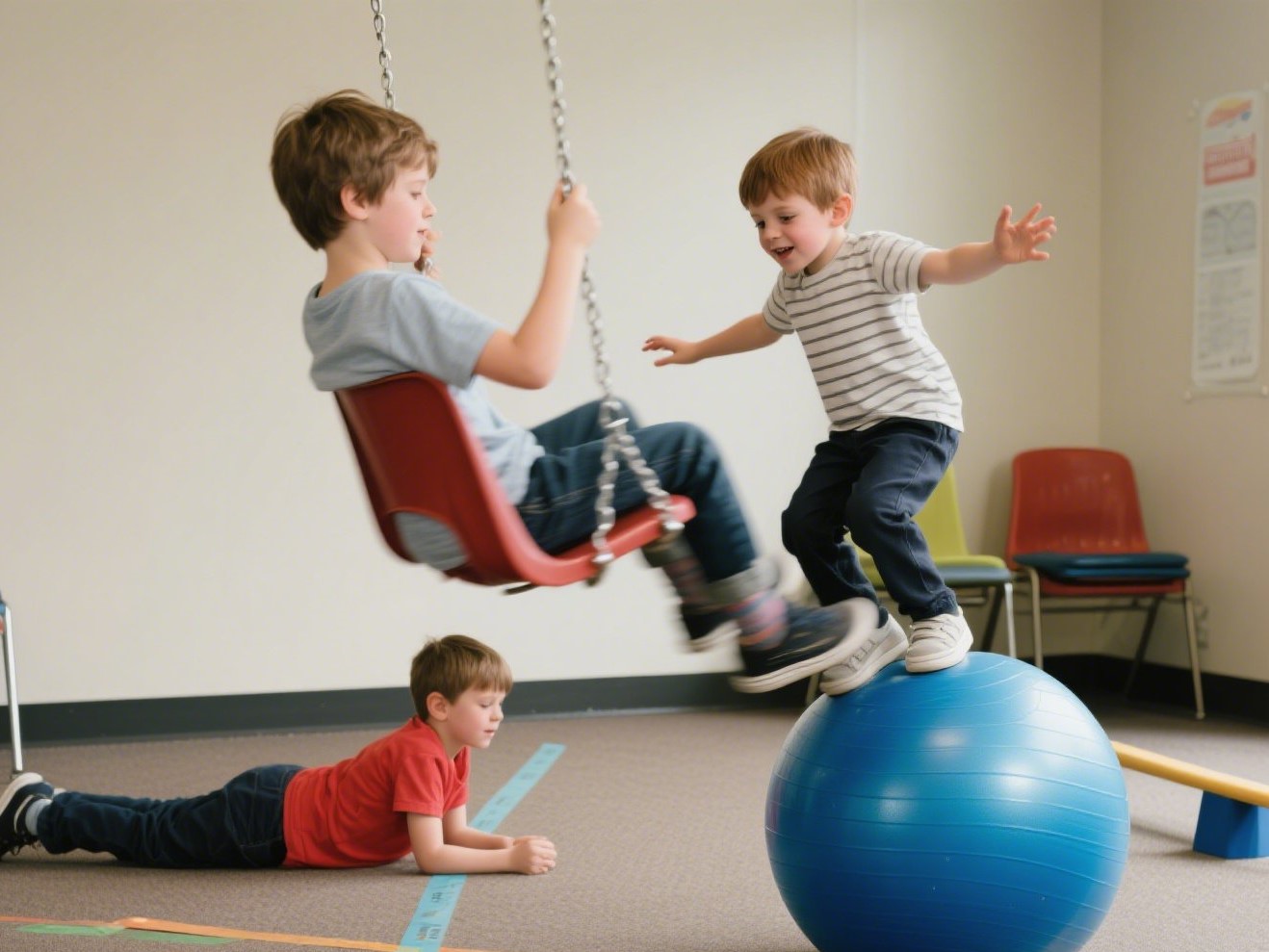
4. Oral Motor Activities
Oral sensory input can have a calming effect and help improve concentration, especially during seated activities.
- Chewy Snacks: Offer foods like dried fruit, licorice, or crunchy veggies for regulating oral input.
- Blowing Bubbles: Deep exhalation helps with relaxation and can reset the nervous system.
- Musical Tools: Whistles, harmonicas, or blowing through straws can improve breath control and self-regulation.

Calming Sensory Activities for Emotional Regulation
Sometimes children need help coming down from a state of over-arousal or big emotions. These calming sensory activities are designed to bring peace and balance.
- Weighted Blankets or Lap Pads: These provide deep pressure input, which is often very grounding and soothing.
- Breathing Tools: Use pinwheels or feathers to guide slow, deep breathing.
- Soothing Spaces: Dim lighting, soft textures, and white noise can transform a room into a calming retreat.
- Mindfulness for Kids: Try guided meditation apps or simple visualization exercises to help children reset their emotional state.
These tools can be particularly helpful during transitions, after school, or before bedtime.
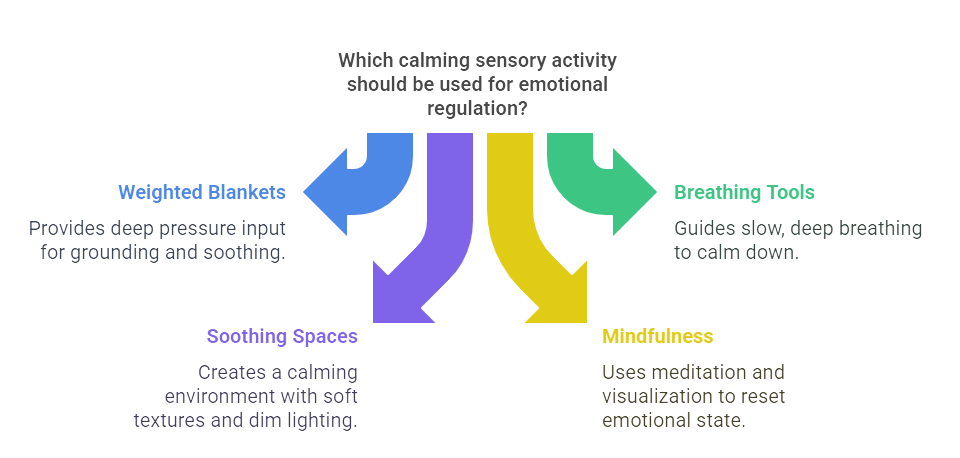
Creating a Sensory-Friendly Environment at Home
A sensory-friendly home doesn’t have to be fancy. A few thoughtful additions can make a world of difference for a child who needs support with focus and calm.
- Sensory Corner: Create a dedicated spot with calming tools—pillows, books, fidget toys, and a cozy rug.
- Visual Schedules: Help children know what to expect using pictures or checklists. This reduces anxiety and improves transitions.
- Routine Sensory Breaks: Incorporate short sensory activities throughout the day—5 minutes of jumping jacks, a quick breathing break, or time in the sensory corner.
Making sensory play a natural part of your daily rhythm helps build long-term regulation skills.
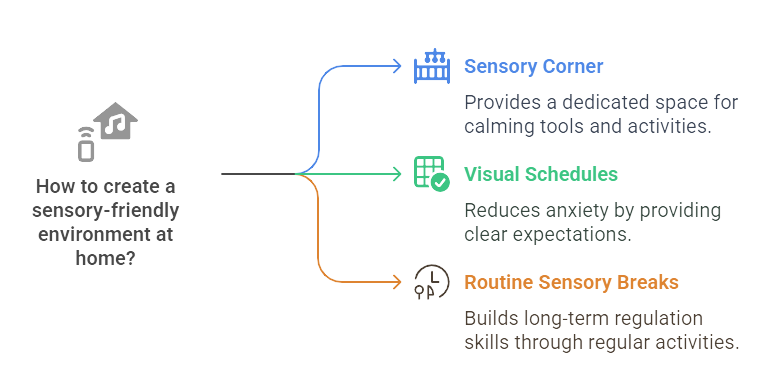
Tips for Parents and Caregivers
Helping your child with sensory regulation is a journey. Every child is different, so patience and observation are key.
- Watch for Cues: Notice when your child seems overstimulated or under-stimulated and adjust the environment accordingly.
- Offer Choices: Let your child choose activities they enjoy and feel safe doing. Empowerment supports regulation.
- Avoid Overload: Keep activities short and sweet, especially when introducing new ones. More is not always better.
- Partner with Professionals: If your child struggles significantly with sensory issues, an occupational therapist can provide a personalized plan.
Sensory regulation is not about “fixing” your child—it’s about supporting them in understanding and managing their needs.
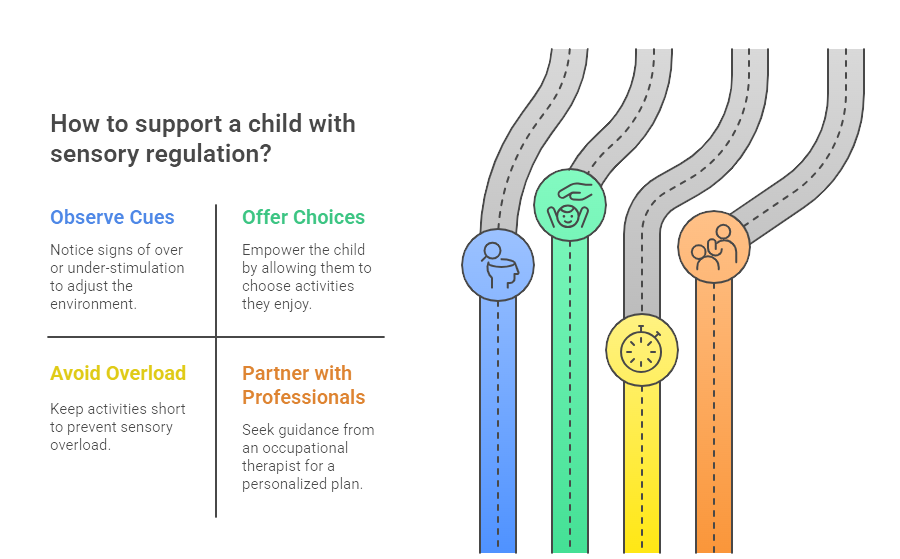
Conclusion
Sensory regulation is a vital part of childhood development, impacting everything from emotional well-being to learning and behavior. Through fun, intentional sensory activities, kids can build focus, calm, and confidence.
Whether you’re rolling out playdough, blowing bubbles, or setting up a cozy sensory nook, you’re doing powerful work. By embracing sensory play, you’re giving your child the tools they need to thrive—in school, at home, and in life.
So go ahead—get messy, get moving, and most importantly, have fun while helping your child grow!


